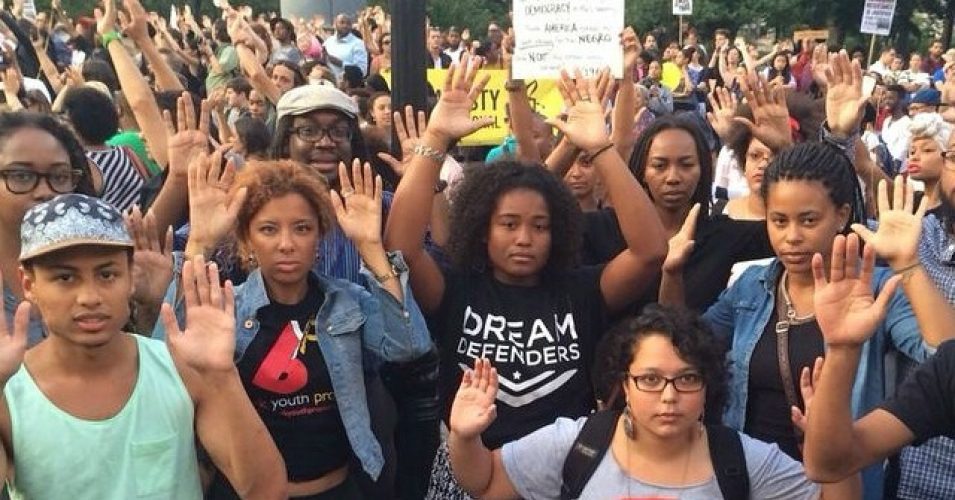
The truth is, “black girls and women are still some of the most vulnerable members of society, thereby putting us more at risk for adverse childhood experiences (ACEs). Black teen girls, in a given year, are more likely to attempt suicide and become trafficked at younger ages than their racial counterparts. Additionally, black girls are at a significantly higher risk for sexual abuse, physical abuse, and child neglect.
Stressors that occur during black and brown children girlhood, such as loss, grief, substance abuse, mental illness, exposure to violence and parental incarceration are identified as adverse childhood experiences (ACEs). A tool to “assess the cumulative effect of trauma on a person’s life”, ACEs identifies household dysfunction by exploring childhood experiences through a series of questions. At the conclusion, the response totals are utilized to assess the likelihood of risk factors for negative physical, mental and behavioral health outcomes (i.e. – asthma, early experimentation with drugs, suicidal ideation).
The National Survey of Children’s Exposure to Violence indicates that more than 60 percent of children from birth to 17 years experience victimization and 38 percent witness violence sometime during childhood. While our recent focus has centered on the black and brown #missingDCgirls, who are disproportionately pushed out of the educational system, the community needs the conversation expanded in order to continue to coalition build and support efforts for black and brown girls affected by many of the issues that girls face, within their families, schools, and communities.
Faced with significant trauma and limited coping skills, many girls engage in behaviors that impede healthy socio-emotional development and positive overall well being. Cutting, drug experimentation, poor diet, violent outbursts, social isolation and displays of depressive emotions are just some of the behaviors that precede unaddressed stress and hopelessness, particularly in black and brown girls’ lives.
Restricted by geographic location, lack of resources, lack of knowledge of supportive services, healthcare access barriers due to age and parental rights and adolescents are left with no options. It is the foundation for a perfect storm hopeless feelings and stress.
Exploring the Impact of Criminalizing Policies on African American Women and Girls
In September 2015, scholars, community members, activist, and advocates gathered for a roundtable to discuss the impact of incarceration and mandatory minimums on survivors. With goals that focus on black women and girls, survivors of domestic violence and sexual assault highlighted criminalizing policies, mandatory minimums, and challenges in reform initiatives.
The summary report highlighting the US Department of Justice Office on Violence Against Women key points and recommendations from the roundtable was issued in January 2017. The report captures these critical issues at “the intersection of multiple aspects of a person’s identity (i.e., gender, race).” When examining the “impacts of increasing incarceration and criminalization,” public health issues faced by black women and girls, such as domestic violence, sexual assault, mental illness, disability and chronic health ailments are often an afterthought. While acknowledging, the roundtable did not further discuss the impacts due to expression or exploration of sexual orientation.
“…participants noted that efforts to end violence require a deeper analysis of the intersecting factors that shape an individual’s identity. For example, it is important to take into consideration the additional barriers and risks experienced by lesbian, gay, bisexual, transgender and queer (LGBTQ) girls and women. Participants also highlighted the need to take into account the particular challenges and exploitation of transgender women and girls.”
The criminalization black women and girls face due to the inability to cope, runaway status, nonreporting of parental abandonment and all “the ways in which conditions and experiences related to domestic violence and sexual assault intersect with girls’ experiences in the child welfare and social services systems.” This an area of inquiry for further research and development of culturally relevant and trauma informed programming. As evidenced by the short and long term effects of adverse childhood experiences (ACEs), the correlations to pathways involving hyper-regulation and criminalizing trauma are the opposite approach to rehabilitation.
Critical race and black feminist theory are the foundations of my clinical and sociological perspective when presenting bio-psycho-socio-emotional histories. Social workers in clinical roles such as substance abuse and mental health are trained to not only “acknowledge, be supportive and discuss the problem” but also help the client navigate institutions and systems.
As an effective therapist, it’s imperative to not pathologize behaviors but to also understand individuals, communities, and organizations within the context of the social and cultural climate.












